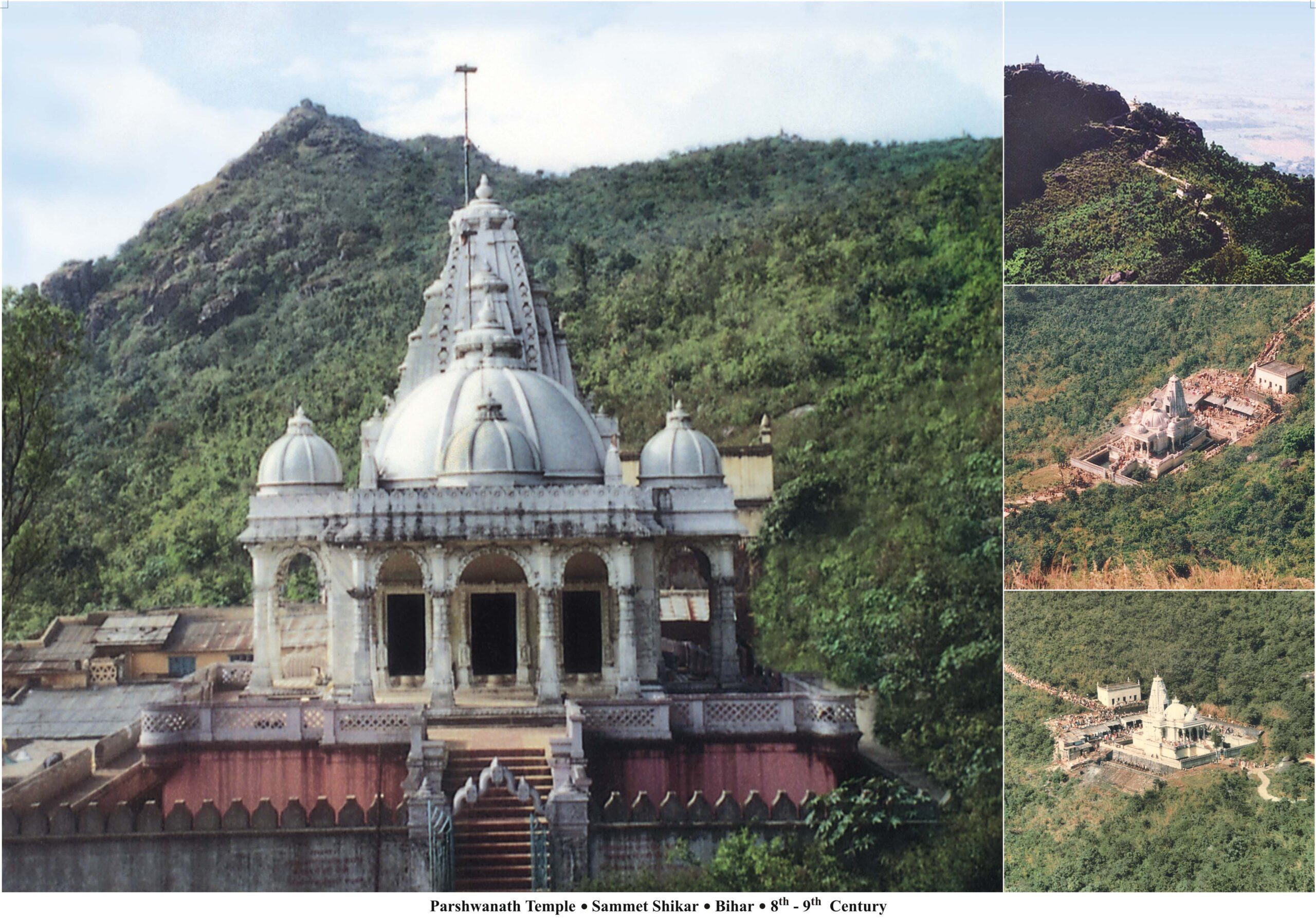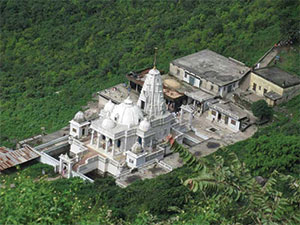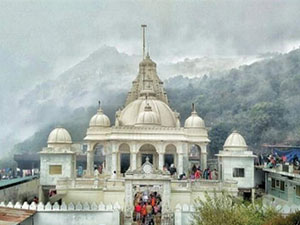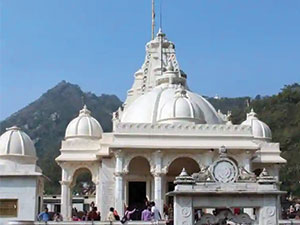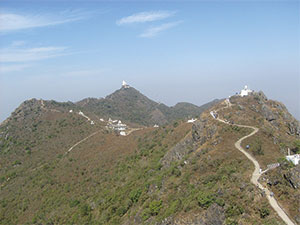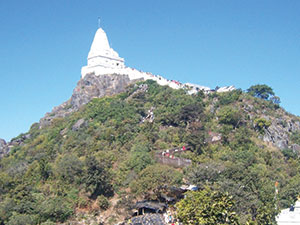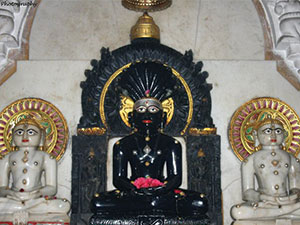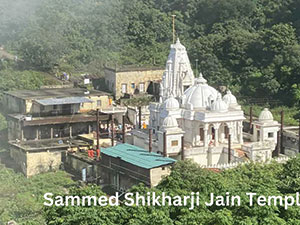Shikharji (Śikharjī), also known as Sammed or Sammet Shikharji, is one of the Holiest pilgrimage sites for Jains, in Giridih district, Jharkhand. It is located on Parasnath hill, the highest mountain in the state of Jharkhand. It is the most important Jain Tirtha (pilgrimage site), for it is the place where twenty of the twenty-four Jain tirthankaras (supreme preachers of Dharma) along with many other monks attained Moksha. It is one of the five principal pilgrimage destinations along with Girnar, Pawapuri, Champapuri, Dilwara, Palitana and Ashtapad Kailash.
Archaeological evidences indicate the presence of Jains going back to at least 1500 BCE. The earliest literary reference to Shikharji as a tirth (place of pilgrimage) is found in the Jñātṛdhārmakātha, one of the twelve core texts of Jainism compiled in 6th century BCE by chief disciple of Mahavira. Shikharji is also mentioned in the Pārśvanāthacarita, a twelfth-century biography of Pārśva. A 13th century CE palm-leaf manuscript of Kalpa Sūtra and Kalakacaryakatha has an image of a scene of Parshavanatha’s nirvana at Shikharji.
Modern history records show that Shikharji Hill is regarded as the place of worship of the Jain community. Vastupala, prime minister during the reign of king Vīradhavala and Vīsaladeva of Vaghela dynasty, constructed a Jain temple housing 20 idols of Tirthankaras. The temple also housed images of his ancestors and Samavasarana. During the regime of Mughal’s rule in India, Emperor Akbar in the year 1583 had passed an firman (official order) granting the management of Shikharji Hill to the Jain community to prevent the slaughter of animals in the vicinity. Seth Hiranand Mukim, personal jeweller of Mughal Emperor Jahangir, lead a party from Agra to Shikharji for Jain pilgrimage. In 2019, the Government of Delhi included Sammed Shikharji under Mukhyamantri Tirth Yatra Yojana.
Shikharji is considered as the most important pilgrimage centre by both the Digambara and Śvētāmbara sects of Jainism and the jurisdiction of the main temples is shared by both sects.
The current structure of temples at Shikharji was re-built by Jagat Seth in 1768 CE. However, the idol itself is very old. The Sanskrit inscription at the foot of the image is dated 1678 CE. One of the shrines dates back to the 14th century. Several Śvētāmbara temples were constructed in 20th century. Pilgrims offer rice, sandal, dhupa, flower, fruits and diya.
At the base of Shikharji is a temple to Bhomiyaji (Taleti). On the walls of the Jain temple at the village of Madhuban, there is a mural painting depicting all the temples on Parasnath Hill. Śvētāmbara Bhaktamara temple, established by Acharya Ramchandrasuri, is the first temple to house a Bhaktamara Stotra yantra.
A large Digambara Jain temple depicting Nandishwar Dweep is at the base of the hill. The Nichli temple, built by a Calcutta merchant in 18th century, is noteworthy for its architecture. The temple features arched gateways and carvings of Tirthankaras on the temple wall.

